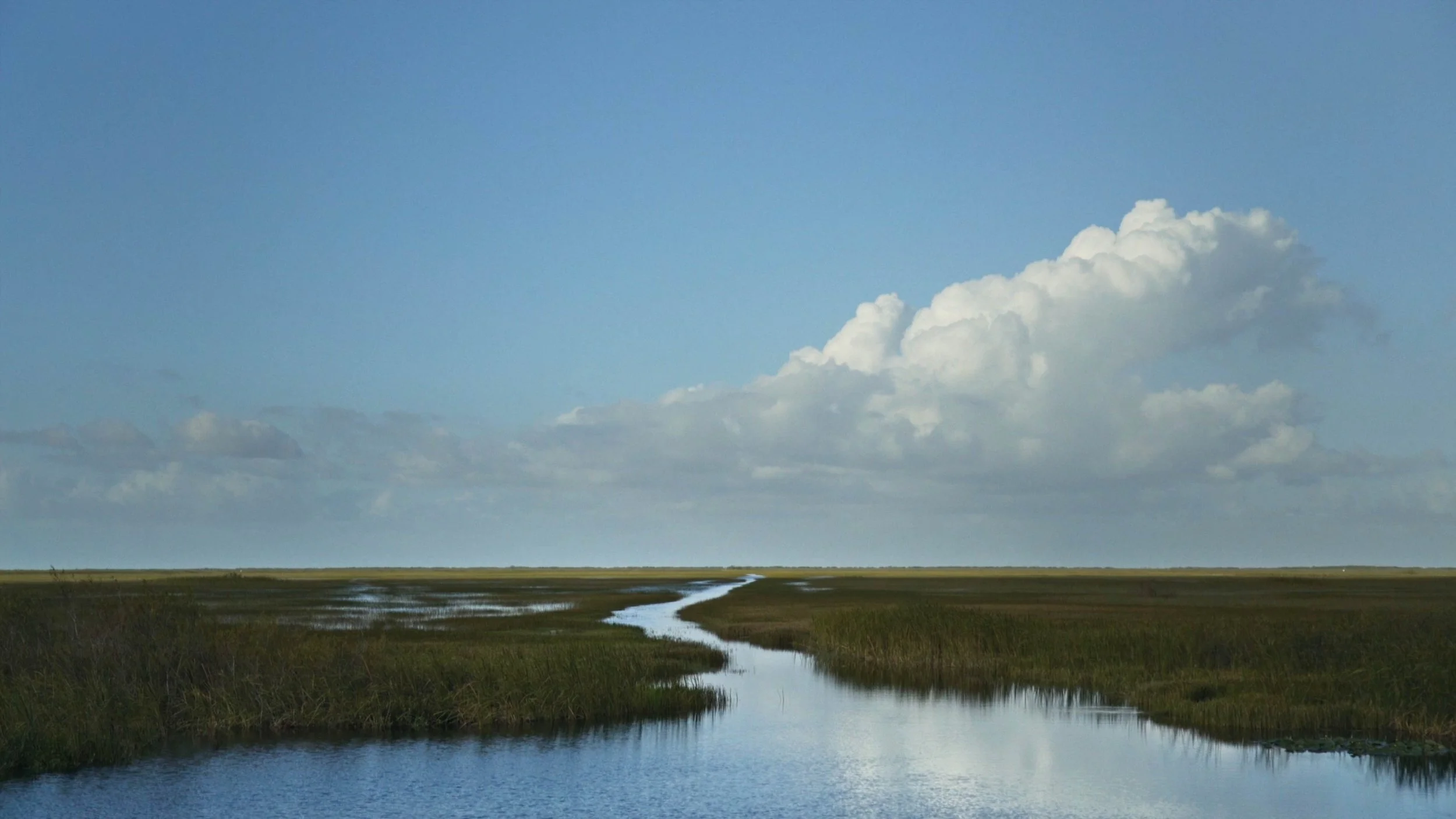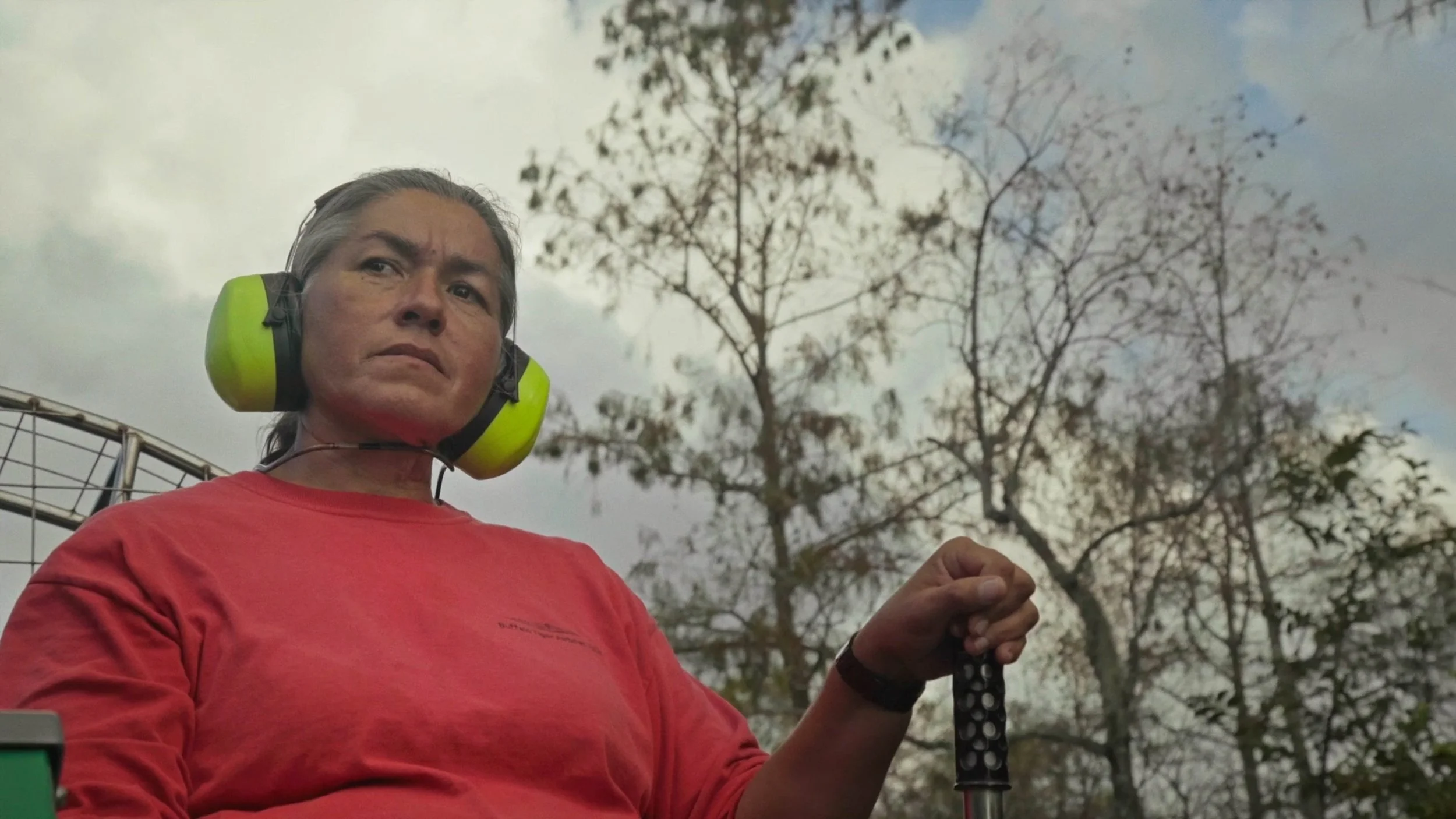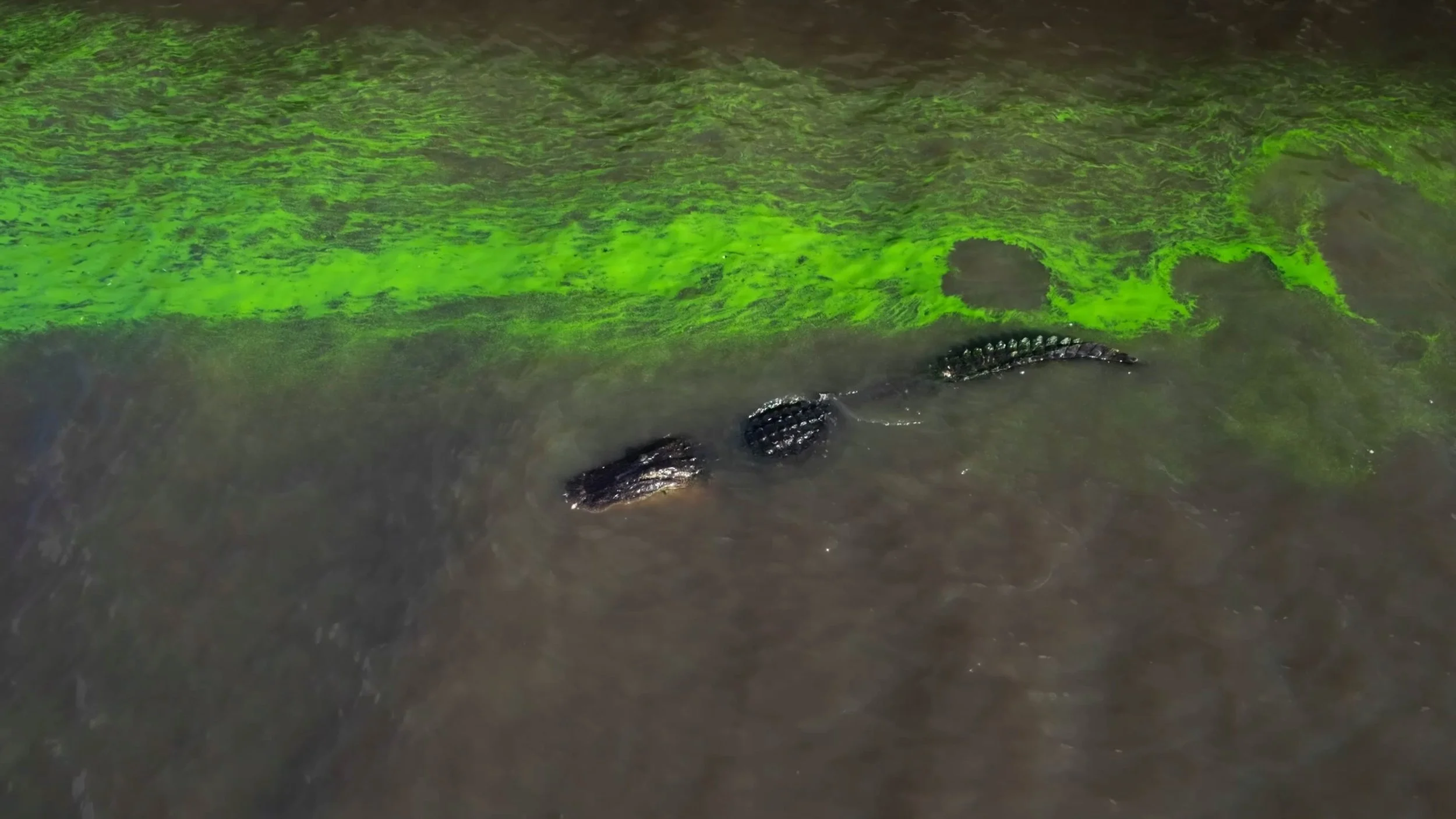‘River of Grass’ Review: Sasha Wortzel’s Tesselated Tribute to the Florida Everglades
Courtesy of Sasha Wortzel and Walking Productions
The introductory lines from conservationist-turned-author Marjory Stoneman Douglas’ seminal work, 1947’s River of Grass, read: “There are no other Everglades in the world. They are, they always have been, one of the unique regions of the earth, remote, never wholly known.” For her latest documentary, Florida-born interdisciplinary artist Sasha Wortzel re-examines Douglas’ pedagogical warnings about the declining state of the Everglades, culminating with the eponymously titled River of Grass. Like a boundless mosaic–– reminiscent of the Everglades’ continuously shifting waters–– River of Grass heralds the powers that have dedicated themselves to safeguarding the territory, and calls necessary attention to the issues leading to its gradual destruction.
River of Grass vacillates its narrative focus between three perspectives: those of Douglas, Miccosukee forerunner Betty Osceola, and the director’s own. Through this method, we come to understand what the Everglades mean to each of these disparate figures and how the verdant region has shaped their lives. Despite their differences in background and age, these outlooks are all similarly influenced by the area’s natural impact, the countless plants and animals that contribute to its development, and, of course, the ever-flowing waters that configure its incomparable ecosystem. Wortzel captures this trio of personal histories as a bricolage, melding archival materials with contemporary footage to imbue the documentary with a dynamicism that mirrors the landscape it concentrates on.
Courtesy of Sasha Wortzel and Walking Productions
The documentary primarily explores Douglas’ lasting influence through her remaining vestiges, including personal notes and camcorder footage taken at the end of her life (Douglas died in 1998 at an incredible 108 years old). Having relocated from New York City to Miami in 1915, Douglas was at the forefront of the dramatic post-war transformation of South Florida, as the booming American economy sparked increased interest in tourism. In a voiceover recording, Douglas explains how rising populations and urbanization in this vicinity instantly impacted the seasonal cycle of the Everglades. The natural flow from Lake Okeechobee southward to the ocean was cut off and manipulated by human interests, upsetting the balance that had been cultivated over thousands of years, as well as the populations of alligators, bobcats, birds, snakes, and other creatures that live in the lake’s neighboring wetlands. Further intercuttings of footage featuring Douglas throughout the documentary underscore her relentless pursuit to transform the public’s perception of the Everglades from useless swampland to a critical component of the state’s overall well-being.
Shifting from Douglas’ somewhat humorous poshness, telltale of pre-war American sensibilities, River of Grass resettles its focus on a contemporary protector of the Everglades, Osceola, a motorcycle-driving two-spirit member of the Miccosukee, a Native American tribe indigenous to South Florida. Their first statement does much to challenge Douglas’ legacy: “She stole the name 'River of Grass’. She was sharing the knowledge she learned from the Indigenous people.” The documentary’s camera (shot by cinematographer J. Bennett) follows Osceola and others on a prayer walk through the Everglades watershed, and we sense their more profound connection to the land and its importance to their history and culture, which extends far beyond Douglas’ commitment to conserving it. Expanding its vision to other marginalized groups affected by the degradation of the Everglades and its surrounding area, River of Grass includes interviews with a sixth-generation African American woman whose community is concerned by the increased use of pesticides in the province.
Wortzel weaves these visions of two time-spanning voices in the movement to preserve the Everglades with her own ties to the place, flexing her creativity to transform River of Grass into a much more sensorial experience, far beyond the typical clichés of environmental documentaries. In moments, her own hushed voiceover recollects memories of growing up in such a lush yet tempestuous climate, where thunderstorms would shake the foundations of their home during the night and beget the most captivating of lights the next morning when they finally ended. Layering sonorous natural tones over images of destructive hurricanes or drone footage high over toxic algae blooms, Wortzel’s audio-visual approach simultaneously communicates her reverence and horror for the Everglades as it continues to be altered by habitat fragmentation due to human interference.
Courtesy of Sasha Wortzel and Walking Productions
Having first begun conceptualizing River of Grass during a 2017 artist residency in the Everglades National Park, Wortzel’s finalized creation serves as a passionate ode to one of America’s most iconic natural splendors and highlights the coming crises that will arise should we continue to decimate such places. As Osceola states in the documentary’s closing sequence, “Nature will always win in the end. You have to decide if you’re gonna be there as part of that win.”
4/5
2025 / 83 minutes / Color / 1:85:1 DCP / Dolby Digital 5.1 / USA / in English
‘River of Grass’ world premiered at the 2025 True/False Film Fest. The documentary begins its limited theatrical release in the U.S. beginning Friday, October 17, courtesy of Fourth Act Film. Click here for more information about ‘River of Grass’.


